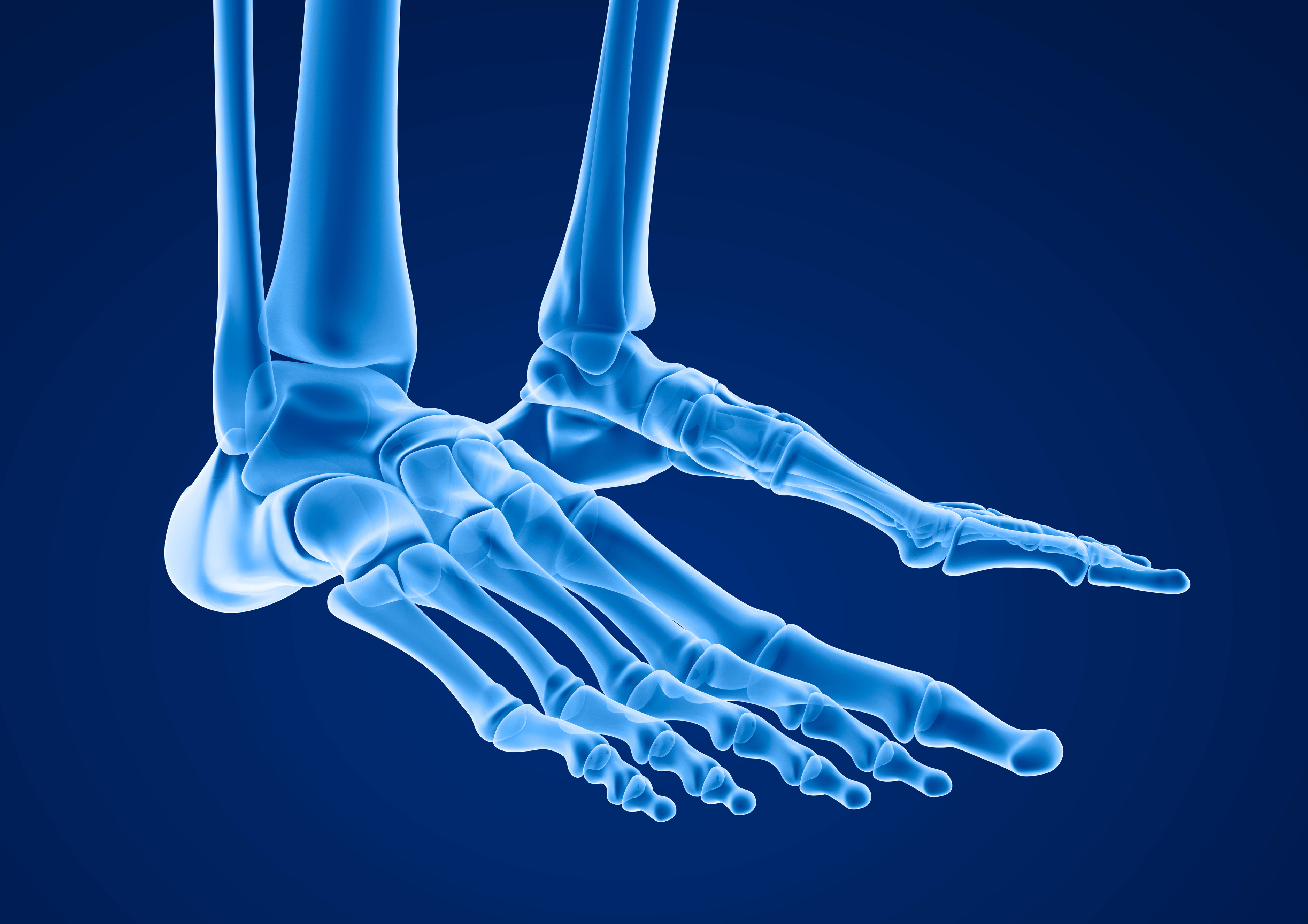
Imagine waking up in the morning free of frustration and relieved from the pain caused by your foot problem. You can wear any shoes you want to because the bony bump protruding on your big toe doesn’t rub against them. You can take your daily walks again, going as far as you’d like because your usual red and infected ingrown toenail hasn’t returned. You can show your feet in public because your curly toes are straight – and your feet are beautiful again!
Do you want to fix your foot problem, but the term foot surgery and the related images that appear in your mind’s eye cause enough fear to well up inside you that you just push through the pain, day after day?
Then you can make the easy decision right now to learn about foot surgery using a minimally invasive technique that offers a pain-free solution to your foot problem.
Whatever you think you know about foot surgery, all the reasons that are causing you to be scared, can be forgotten when a minimally invasive technique is used.
Minimally invasive surgery (MIS) is a procedure done by making a very small incision directly through the skin to the bone to help correct foot problems without damaging the soft tissue.
But there’s bad news and good news….
The Bad News is, you WON’T:
The Good News is, it’s EASY!
Foot surgery using a minimally invasive technique is an EASY decision
During traditional foot surgery, podiatric surgeons may need to create incisions in the foot as long as three to six inches to reach the bones, muscles, and tendons that need to be repaired for many conditions and injuries that affect the feet and ankles. Opening the body to this degree increases the risk of infection, scarring and often requires an extended recovery time.
Let’s discuss what type of foot problems minimally invasive surgery can help. It’s important to note that many foot and ankle problems can be treated without surgery, but if they are left untreated for too long the problem gets bad enough that it requires surgery. The most common issues are:

Bunions – A bunion is a bone deformity that occurs on your big toe joint when the toe moves out of place. This creates a bump on the toe that can be very painful, especially when it causes friction and pressure as it rubs against footwear. Bunions can be hereditary, but also are made worse by poorly fitting shoes.
Bunions can’t heal themselves, and while there are some conventional treatment options available that will help take care of the pain, surgery is what is needed to correct the position of the big toe joint.
Hammertoes – A hammertoe is also a toe deformity where the toe is bent at the middle joint, producing a curly toe that resembles a hammer. Hammertoes are most often caused by hereditary factors affecting the way one walks, causing the toes to bear too much weight. Hammertoes are made worse by consistently wearing shoes that have a toe box that is too narrow or too tight and forces the toes in a bent position.
A hammertoe can be prevented, and basic treatment options used if it’s caught early enough and treatment begins right away. Since hammertoes change the way the joints in the toes react and rub against each other, they can lead to other problems and cause the toe to become inflexible altogether. This will ultimately lead to the need for surgery to correct the hammertoes.

Heel Spurs – A heel spur is a calcium deposit on the underside of the heel bone that is caused by strains on the foot muscles and ligaments or stretching of the plantar fascia (the band of tissue that runs along the bottom of the foot). Heel spurs themselves are usually painless, but they can cause extreme heel pain by tearing of the plantar fascia ligament. Common treatment options are exercise, stretching, custom orthotics, and anti-inflammatory medications, but when these don’t work surgery may be necessary.
Ankle Injuries – Whether or not surgery is needed for ankle injuries is best determined on a case by case basis. Ankle sprains are the most common type of ankle injury that would require surgery. When you sprain your ankle, your foot twists, rolls or turns beyond its normal range of motion, usually when you land unevenly on a surface beyond the normal force of stepping. This forces your ligaments to stretch beyond the normal range, resulting in a sprain. Sometimes the subtalar joint (the joint below the ankle) is affected and causes chronic pain from the foot “rolling-in” too much during walking. Minimally invasive procedures are available to treat this as well.

Dropped Metatarsals – a metatarsal is one of the long bones of the foot that form the ball of the foot. They support the weight of the body on the floor and help propel us along our way. However, the position of these long bones can be affected by hereditary factors affecting the way one walks, causing the tip of the metatarsal (the head of this bone) to point towards the floor. This can cause a painful callus or pinch a nerve. Dropped metatarsals are made worse by consistently wearing shoes that have a toe box that is too narrow or too tight and forces the toes in a bent position.
Toenail Fungus – Toenail fungus is an infection that occurs underneath the nail and can cause discoloration, brittleness, or even the nail to loosen, thicken or crumble. You could live with toenail fungus for years without it causing you any issues or pain. Sometimes the bigger issue is the embarrassment is causes or that the fungal infection keeps returning. If it gets bad enough you may not feel comfortable wearing shoes that expose your toes any longer.
It’s also not uncommon for conservative treatment options like oral or topical medications to work for a while, but not get rid of the fungus completely. Toenail fungus laser treatment uses a minimally invasive approach that is extremely effective for getting rid of toenail fungus.

Minimally invasive surgery is performed using specially designed instruments, similar to the tiny instruments used by jewelers, which are inserted into the body through small incisions made through the skin directly to bone to help correct deformities without damaging the soft tissue.
The podiatrist uses a technique called fluoroscopy to see inside the body without having to open it up. Fluoroscopy is an imaging technique that is performed using a live x-ray machine with very low radiation. The images are sent to a video monitor set up in the operating room.
This allows the podiatrist to complete complicated and delicate procedures without exposing the patient to any unnecessary risks.
Using a minimally invasive approach, patients can expect some appealing benefits:
Best of all, minimally invasive surgery is also extremely effective when other conservative treatments are not. While it’s sometimes the last resort for both patients and podiatrists, it’s usually the treatment option that is required to eliminate your foot pain for good – especially if a foot problem was not dealt with soon enough and has just gotten worse over time.
“If you had feet like I had, and you had an experience with Dr. Nagy, you would praise him all day long. I can’t say enough about how successful it was, how painless it was, and how easy it was. The recovery was great, and the results were perfect. I just keep looking at my foot, and say, ‘Oh, you are so beautiful’. “
– Ida M.

Recovery from minimally invasive surgery is usually quicker – up to twice as fast – and less painful than a traditional open surgery. Depending on the condition, many patients are back on their feet within a few days following a minimally invasive procedure. Due to the small size of the incision, patients will have stitches for about a week, experience less pain during recovery, and are left with no visible scarring.
Patients who get minimally invasive foot surgery enjoy significantly reduced recovery times, however the actual length of recovery time will depend on the foot problem you are being treated for and your individual circumstances.

When you’re choosing where to have any kind of surgical procedure, you want to make sure it’s a clean, safe environment, and the doctors are qualified. You’ll find this at Nagy Footcare.
Dr. Nagy is one of the only Podiatrists in New Hampshire using the Minimally Invasive (MIS) technique for foot surgery, meaning very little pain and fast recovery from most foot surgeries
Dr. Nagy is a Board-Certified Fellow with the Academy of Minimally Invasive Foot and Ankle Surgeons, the American Board of Podiatric Medicine.
Dr. Nagy is licensed with the State of New Hampshire Board of Registration & Podiatry (License #0302) and Board Certified. He also sits on the Board of Directors for the Academy of Minimally Invasive Foot and Ankle Surgeons.
Board Certification is a voluntary process, and one that is very different from medical licensure. Obtaining a medical license sets the minimum competency requirements to diagnose and treat patients; it’s not specialty specific. Board Certification demonstrates a physician’s exceptional expertise in a specialty and/or subspecialty of medical practice.
To be board certified, one must have over five years in practice, submit cases to the board, and sit for an oral and practical exam. This certification must also be maintained by periodic re-testing to ensure the physician is still maintaining the highest standards.
 Nagy Footcare is also a certified Atlas Center. Atlas FAI is comprised of some of the best physicians in the country. Physicians that are knowledgeable, trained and skilled on the EOTTS-HyProCure procedure and that have a strong belief in healing as many people with misaligned feet as they can.
Nagy Footcare is also a certified Atlas Center. Atlas FAI is comprised of some of the best physicians in the country. Physicians that are knowledgeable, trained and skilled on the EOTTS-HyProCure procedure and that have a strong belief in healing as many people with misaligned feet as they can.
This means he has the best training and has proven himself to be exceptional in providing excellent treatments for his patients.
“I had so much confidence in Dr. Nagy that I wasn’t even nervous. Dr. Nagy listens and he explains everything to you. I knew everything that was going to happen. He talks to you before the surgery. He’ll show you on paper exactly what he’s going to be doing. I went in his office in North Hampton, and I was awake through the whole thing, and they played music, and they talked to me! It was so easy.”
– Sandy P.

To prepare for a minimally invasive procedure, a podiatrist at Nagy Footcare will start by getting to know you, your important background information and medical history, as well as give you the time to get to know them.
We believe you should be listened to carefully, so we really understand you and your feet, and that you should understand your diagnosis and treatment. But it’s up to you to take the first step!